
Culture China
10:36, 26-Mar-2019
In Tibet: The cultural treasures that make Tibet a rare gem
By Ai Yan
01:54
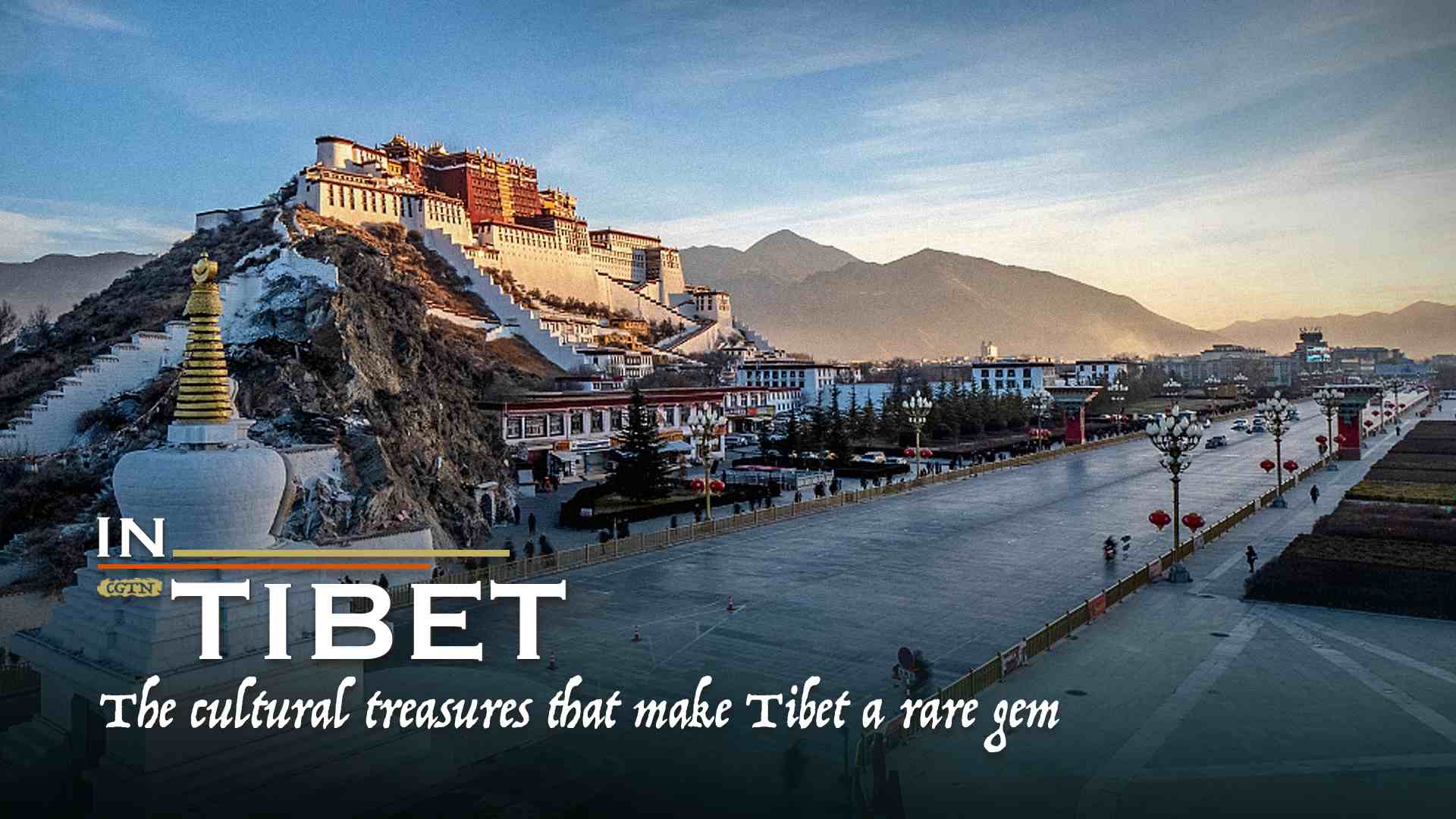
When someone speaks of Tibet, what comes to your mind first? Probably miles of snow-covered plateau under the azure sky, colorful prayer flags stretching across the temples, villages and mountains, divine chanting of the Tibetan Buddhists from temple to temple, or the diverse cultural items tinged with local scents…
Tibet has provided us with precious deposits of cultural treasures, which, after decades of exploration, is regaining its glitz.
In 2018, the Tibetan medical bathing was enlisted in the World Intangible Cultural Heritage of the United Nations Educational, Scientific and Cultural Organization (UNESCO), bringing the piece of land and the wisdom of the residents there to the world once again.
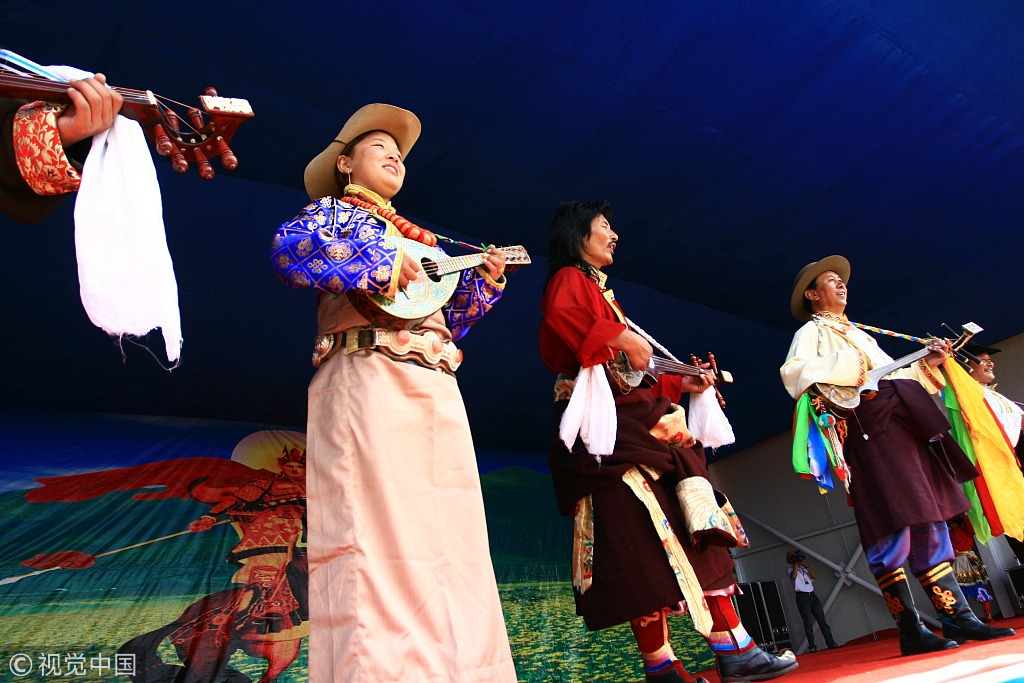
Folk artists perform "Epic of King Gesar" on stage. /VCG Photo
Folk artists perform "Epic of King Gesar" on stage. /VCG Photo
Besides the ancient therapy, two other cultural items that originated from Tibet has also been enlisted: the Tibetan Opera and the Epic of King Gesar. They are only a small piece of the cultural treasures on the plateau.
In order to preserve the cultural relics in the area, starting in 2016, the local government of the Tibet Autonomous Region built the Museum for Intangible Cultural Heritage which was completed on May 18, 2018.
Today, Tibet has at least 89 projects enlisted as the national intangible cultural heritage, with 68 designated inheritors. The projects of the autonomous-region level have mounted to 323, with 350 inheritors, and the numbers of city- and county-level projects are 487 and 1,364, with inheritors up to 254 and 425, respectively.
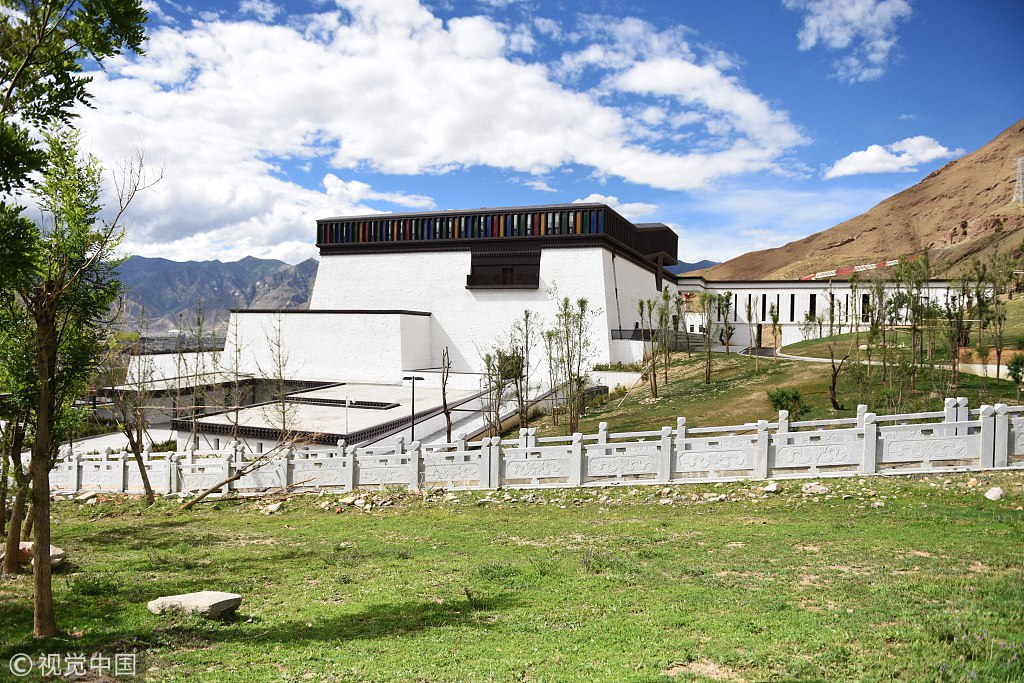
The Museum of Intangible Cultural Heritage in Tibet. /VCG Photo
The Museum of Intangible Cultural Heritage in Tibet. /VCG Photo
Both the governments of the country and the autonomous region have made huge investments in preserving the culture from dying out. Since Tibet launched its project on protecting the intangible cultural heritage in 2006, at least 300 million yuan (44.8 million U.S. dollars) have been invested in the project, 195 million yuan (29.06 million U.S. dollars) of which from the central government.
And the local government has put in at least 15 million yuan (2.24 million U.S. dollars) in protecting Tibetan Opera and the Epic of King Gesar.
Starting in 2013, the local government has recorded a total of 27 hours of Gesar artists' ballads, and another 70 hours of the northern Tibetan Gesar artists' ballads. The number of civil Tibetan opera troupes grew from less than 50 to 143 in 2018.
Legislation is also an indispensable part. As early as 2005, the local government issued instructions to protect the intangible cultural heritage, while in 2014, the first local law on their protection took effect, making Tibet the 14th provincial-level area to have such laws.
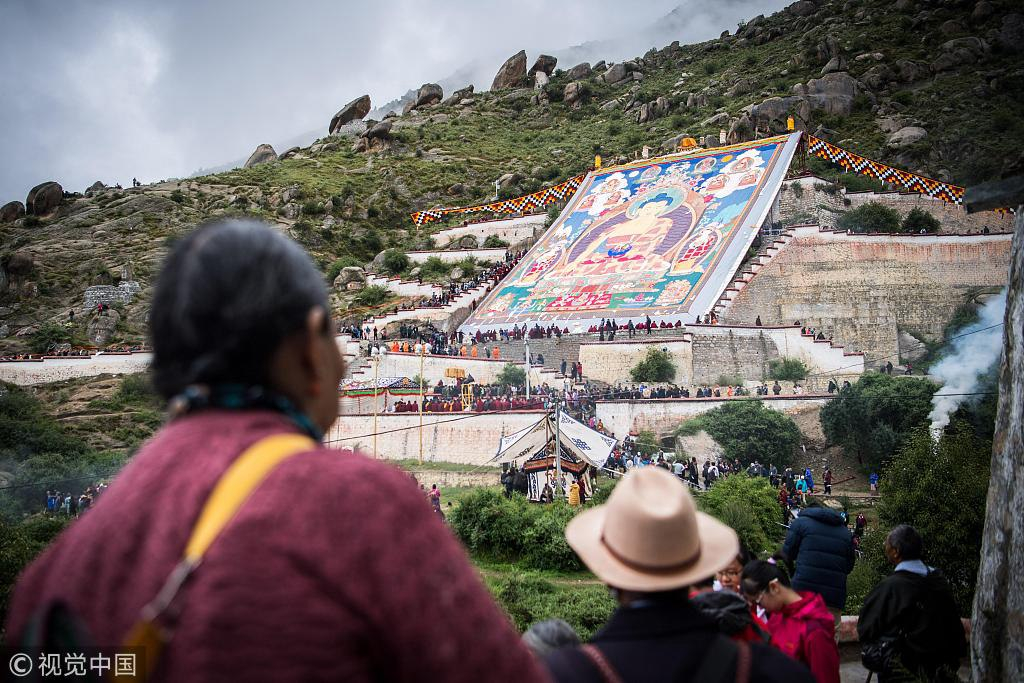
Shining the Buddha at Drepung Monastery in Lhasa, Tibet. /VCG Photo
Shining the Buddha at Drepung Monastery in Lhasa, Tibet. /VCG Photo
Meanwhile, as a region where religion plays a critical role, the rise and prosperity of the cultural resources could also be owed to the pervasiveness of Lamaism and the harmonious environment which breeds it.
According to a Xinhua report in 2018, the Tibet Autonomous Region has around 1,780 temples or sites where religious activities are carried out regularly, as well as more than 46,000 registered monks and nuns. Alongside Lamaism, other religions exist in the region, including Islam and Catholicism.
Large-scale religious activities, such as Kora around holy mountains and rivers, Saga Dawa Festival, Shoton Festival, and Shining the Buddha are all practiced, protected and inherited, adding charm to the roof of the world.
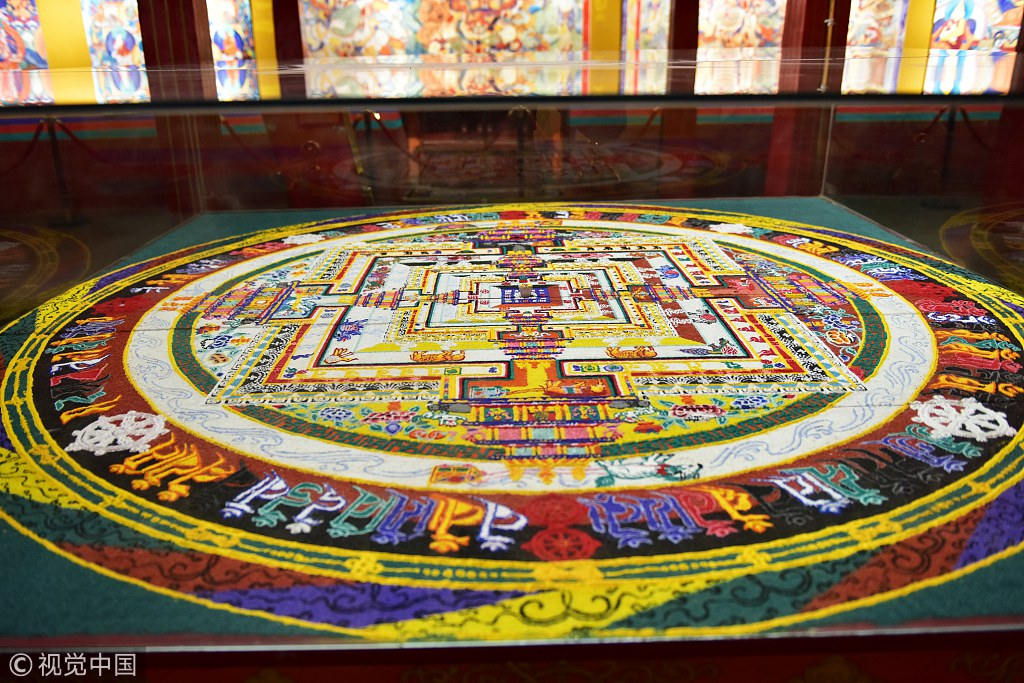
A Tangka painting on display in Lhasa. /VCG Photo
A Tangka painting on display in Lhasa. /VCG Photo
Latest figure shows that more than 30 million tourists visited Tibet in 2018, up 31.5 percent year on year. The number is expected to exceed 40 million in 2019. An increasing number of tourists prefer to spend the festival there, experiencing the local culture and atmosphere of a real Tibet rather than just taking some pictures and ending up with “having been there.”
And all the efforts in cultural protection and promotion were well paid back. The most obvious achievement is that many Tibetan cultural items, such as Tangka paintings, Tibetan Opera, medicine, incenses and the Gesar ballads, have been known by more people, nationwide and worldwide.
In 2015, the output value of the culture-related industry exceeded three billion yuan (450 million U.S. dollars), for the first time, a breakthrough for the region. In 2016, the amount was 3.45 billion yuan (510 million U.S. dollars), and culture has been gradually growing into a pillar industry in Tibet.
(Video edited by Wang Baozhu, cover image designed by Gao Hongmei)

SITEMAP
Copyright © 2018 CGTN. Beijing ICP prepared NO.16065310-3
Copyright © 2018 CGTN. Beijing ICP prepared NO.16065310-3